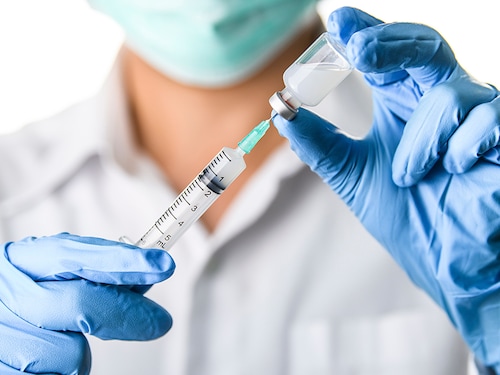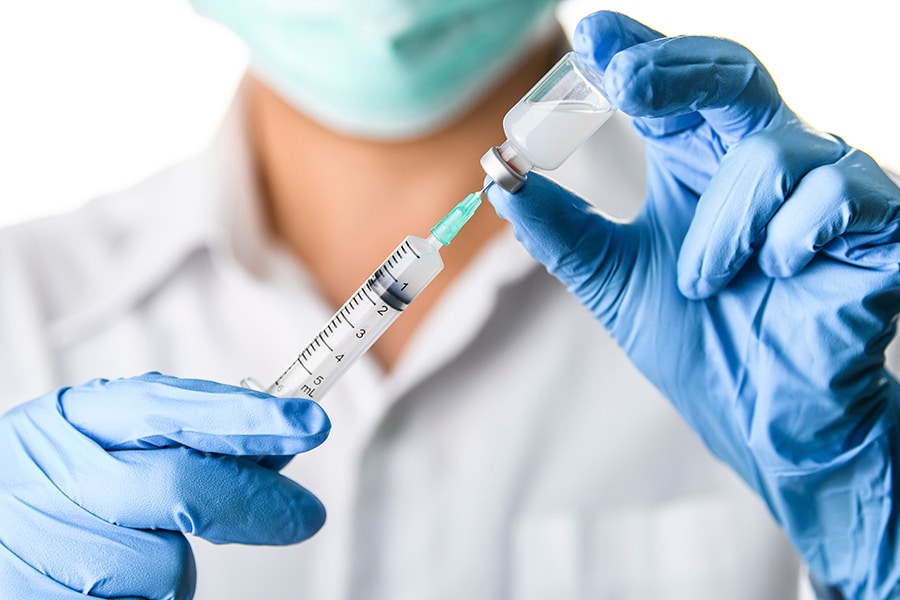Moderna's COVID Vaccine: What you need to know
What do the Pfizer and Moderna reports mean together? What happens next? Here are answers to all the questions you had


 Image: Shutterstock
Image: Shutterstock
On Monday, Massachusetts-based company Moderna reported promising preliminary results from its coronavirus vaccine trial. Coming just a week after similar news from Pfizer and BioNTech, the announcement immediately gave the stock market a fresh jolt. It offered more hope that there’s going to be a way out of the pandemic.
Like Pfizer, however, Moderna released only early data from its trial. There’s more work to be done before it’ll know if the vaccine really is safe and effective. And even if Moderna’s vaccine gets the green light from the Food and Drug Administration, it will take months to reach widespread distribution. In the meantime, the United States is suffering a devastating explosion of new cases of COVID-19.
Here’s where things stand with the development of coronavirus vaccines.
What did these scientists find out?
The scientists randomly assigned volunteers to get either the Moderna vaccine or a placebo. The trial was blinded, meaning that neither the volunteers nor the people running the trial knew who got what.
Over time, some of the volunteers got sick with COVID-19. To get a preliminary sense of how the trial was going, an independent board of experts took a look at the first 95 participants who got sick. Ninety of them had received the placebo, and only five had been given the vaccine. Based on that data, the board estimated that the vaccine is 94.5% effective.
Do the new vaccine trial results mean the end to the pandemic?
In the short term, no. The soonest that coronavirus vaccines could possibly become widely available would be in the spring. But if effective vaccines do indeed become available — and if most people get them — the pandemic could drastically shrink. As coronavirus infections became rarer, life could gradually return to normal.
What about the vaccinated people who got sick?
COVID-19 can lead to a mild illness, or it can lead to a severe case that requires hospitalization and oxygen support. Out of the 95 people who got sick in the Moderna study, 11 experienced severe disease. None of those 11 people were vaccinated. In other words, the five vaccinated people who got sick experienced only mild symptoms, and all of the severe cases were participants from the placebo group.
“It couldn’t be a more favorable split,” said Natalie Dean, a biostatistician at the University of Florida.
The split suggests that Moderna’s vaccine doesn’t just block the virus in most cases, but also shields the people who do get sick from the worst outcomes of the disease. It also eases concerns that a vaccine for COVID-19 may make the disease worse, not better.
Who participated in the vaccine trial?
Moderna recruited 30,000 volunteers across the United States to participate in its trial. A quarter of the participants are 65 years or older. White people make up 63% of the volunteers 20% are Hispanic 10% are Black and 4% are Asian Americans.
The 95 people who got sick with COVID-19 reflect the diversity of Moderna’s volunteers: Fifteen were 65 or older. The group also included 12 Hispanic volunteers, four Black participants, three Asian Americans and one multiracial person. The efficacy and safety appeared the same in all of the subgroups, Moderna said in its announcement. But researchers will have to wait for the trial to advance further to confirm this finding.
Is Moderna in Operation Warp Speed?
Very much so. The U.S. government provided $1 billion in support for the design and testing of the Moderna vaccine. Researchers at the National Institutes of Health oversaw much of the research, including the clinical trials. Moderna also received an additional $1.5 billion in exchange for 100 million doses if the vaccine proved to be safe and effective.
Although Pfizer has its own advance purchase agreement for its vaccine, it did not take Operation Warp Speed money to support its design or testing.
How do Moderna’s early results compare with Pfizer’s?
Pfizer provided less detail in its announcement last week than Moderna did Monday. Pfizer’s outside board of experts analyzed 94 volunteers and estimated that the effectiveness of its vaccine was more than 90%. It did not specify how many people who got sick had received the vaccine or the placebo.
Nevertheless, the estimates for the two vaccines are clearly in the same ballpark. What’s more, they both far exceed the FDA’s requirement that coronavirus vaccines have an efficacy of more than 50%.
Pfizer did not report how many volunteers had severe COVID-19 or what fraction of those people got the vaccine. Findings like these are expected to come out in the next few weeks.
What about other vaccine candidates?
The Pfizer and Moderna vaccines are similar not only because they use mRNA but also because they coax our cells to make the same viral protein, called spike. Other vaccines that don’t use mRNA also make the spike protein their target. The success of Moderna and Pfizer may bode well for them as well.
A number of teams have created vaccines based on another virus called an adenovirus, for example. The adenovirus slips into cells, delivering the gene for the spike protein. On Wednesday, a sponsor of a Russian vaccine announced that its adenovirus-based vaccine, called Sputnik V, was more than 90% effective. Outside experts wanted to see more data, however, because the announcement was based on just 20 sick volunteers — far fewer than in the Moderna and Pfizer trials.
AstraZeneca and Johnson & Johnson are also conducting Phase 3 trials on adenoviruses that carry the spike protein gene. And other companies, including Novavax and Medicago, are running advanced trials on vaccines that deliver the spike protein itself, or pieces of it, to the body.
How long will the coronavirus vaccines last?
We don’t know. Both Moderna and Pfizer started their trials July 27, and so they have been able to follow their volunteers for only a few months so far.
It’s conceivable that the vaccines provide long-lasting protection or fade away in under a year and require a booster.
What do the Pfizer and Moderna reports mean together?
Pfizer and Moderna used the same basic design to build their vaccines. Both vaccines contain a genetic molecule called messenger RNA, which is wrapped in an oily bubble. The bubble can fuse to a muscle cell and deliver the RNA. Encoded in that molecule are instructions for building a single coronavirus protein called spike. When a vaccinated cell releases copies of the spike protein, the immune system learns to make antibodies against it.
While scientists have investigated mRNA vaccines for years, no vaccine has yet been licensed as safe and effective to use in people. When Moderna and other vaccine makers began designing mRNA vaccines for coronaviruses, skeptics wondered how well they would work. The two preliminary reports from both Moderna and Pfizer suggest this type of vaccine may work very well. Neither trial has uncovered serious side effects from the vaccines, although studies on their safety are continuing.
“I would expect some similarities in how they perform,” said Dean of the University of Florida. “I think I would have had a lot of questions if they got different results.”
What happens next?
Both the Moderna and Pfizer trials are continuing to gather more data from large studies. The two companies expect to apply to the FDA in the next few weeks for an emergency use authorization to begin vaccinating the public.
The FDA will review the applications and consult with its own external committee of experts before making a decision. If it authorize the vaccines — as experts think it will — a committee at the Centers for Disease Control and Prevention will then make recommendations for who should be first to receive a vaccine.
It’s possible that the distribution of one or both vaccines will begin by the end of the year.
Is it safe to go to a holiday get-together?
“This is not going to dig us out of what’s ahead this next month,” Dean warned about Thanksgiving and the coming holiday season.
If the preparations for vaccines don’t hit any major snags, we can realistically hope for large-scale distribution to begin in the spring.
But with exploding cases across the country right now, we have to take immediate measures. The only way to drive down infection rates for now will be to avoid large indoor gatherings, wear masks, practice physical distancing and use other public health measures.
First Published: Nov 17, 2020, 12:09
Subscribe Now